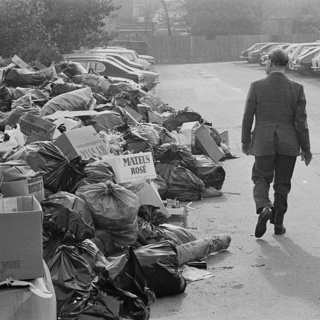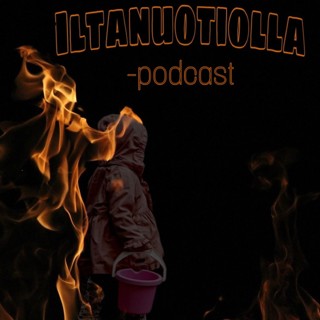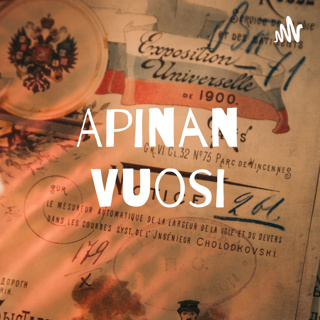
158. Sending Wilde to the Wilderness
Henry Labouchère’s amendment of 1885 had criminalised any sexual act between men, labelling it gross indecency, an offence which was a great deal easier to prove than the older charge of sodomy. In 1895, Oscar Wilde was at the peak of his fame and acclaim, with his play The Importance of Being Earnest having had a hugely successful premier. He was also in a stormy relationship with Alfred Douglas, the son of the Marquess of Queensberry (yes, he of the rules of boxing). Queensberry had already lost his eldest son, killed it was maintained in public in a shooting accident, believed in fact to have committed suicide, following an affair with no less a man than the Prime Minister, Lord Rosebery. When Queensberry realised that another son was involved in something similar, he hit the roof. He left a card at Wilde’s club with the accusation that he was a ‘sodomite’. Wilde felt the accusation was so serious, he had to sue for libel. Sadly, his case fell apart, especially under the acute cross examination of a lawyer destined for a brilliant career in the law and in politics, Edward Carson. He defended Queensberry by setting out to show that the allegation against Wilde was true. Sadly, by doing that he provided all the evidence Wilde’s enemies needed to have him condemned in a criminal trial himself. And with that, Wilde was bankrupted and his career destroyed. “I have ruined the most brilliant man in London,” Carson is reported to have said. Certainly, he contributed. But the real blame was a law that made the unorthodox behaviour of the most brilliant man in London not just a difference to tolerate, but a deviance to persecute. Illustration: Oscar Wilde and Alfred Douglas, in a gelatin silver photo of 1893, by Gillman & Co, National Portrait Gallery P1122 Music: Bach Partita #2c by J Bu licensed under an Attribution-NonCommercial-No Derivatives (aka Music Sharing) 3.0 International License.
3 Syys 202314min

157. Triumph and Decline
Lord Salisbury had decided to serve as his own Foreign Secretary and, indeed, it was events abroad that most marked his third administration. This episode starts by looking at the great feast of Empire which was Queen Victoria’s diamond jubilee of 1897. It was Britain at its peak of might, with the biggest empire the world had ever seen, wealthy, powerful, and with a people broadly united behind the Queen, her Empire and her government. That last bit was something that men like Salisbury, in the government, made the most of. But behind the scenes, a rather different picture was beginning to emerge, of a country whose power, while great, was already in decline. This episode looks at three widely different events, out of the many that Salisbury addressed, that suggest this was happening: the Jameson raid in South Africa, the failure to intervene in support of the Armenian Christians against ongoing massacres by their Turkish overlords, and the US support for Venezuela in a border dispute with then-British Guiana. Illustration: Dr Jameson (fourth from left) and the officers of the Jameson Raid, 1896. National Portrait Gallery P1700(20b) Music: Bach Partita #2c by J Bu licensed under an Attribution-NonCommercial-No Derivatives (aka Music Sharing) 3.0 International License.
27 Elo 202314min

156. Four fine women and two odd Churchills
Back in chapter 120, we met two extraordinary women, Mary Seacole and Florence Nightingale, who transformed the world of nursing. Now we’re looking at four more women who were just as remarkable. They took on the stronghold of the doctors, and broke in. As they did that, they also began to force open the doors of the universities. The specific task of gaining access to universities for women was taken on by another woman mentioned in this episode, and she directed yet another towards the battle for the vote. As well as the women, the episode also looks briefly at a Churchill and the strange launchpad for life he provided for another, his son. But that son is a historical giant, so strange or not, it was a launchpad that would work for him. Illustration: The Elizabeth Garret Anderson Hospital building in Euston Road, London. Photo by Luca Borghi @ (July 2011) Music: Bach Partita #2c by J Bu licensed under an Attribution-NonCommercial-No Derivatives (aka Music Sharing) 3.0 International License.
20 Elo 202314min

155. Salisbury and Science: a time of breakthroughs
Salisbury was back for his third term in office, but for now without a majority in the House of Commons. He had to form a government, and for the first time it would include Liberal Unionists as ministers. One of them, Joseph Chamberlain, surprised Salisbury by choosing to be named Secretary of State for the Colonies in preference to either of the great posts he’d been offered. It seemed that imperialism mattered more to him. With a government in place, Salisbury took the country to a general election. He won with a landslide. In this episode, however, we take a break from all that to look at some of the great breakthroughs, other than his electoral triumph, taking place at that time, specifically in the sciences. Physics was surging. So were the life sciences. So indeed was medicine, but we’ll come back to that next week, when we look at women in that male-dominated field. In particular, one man proposed a disturbingly new scientific viewpoint. That was Charles Darwin, with his highly contentious theory of evolution. One of his admirers, it turned out, was none other than the Prime Minister himself. And, even more surprisingly, when Salisbury did differ from Darwin, his argument was well-founded in science. Not something one would expect from most British Prime Ministers. Illustration: Charles Darwin, pen and ink portrait by Harry Furniis, National Portrait Gallery 6251(16) Music: Bach Partita #2c by J Bu licensed under an Attribution-NonCommercial-No Derivatives (aka Music Sharing) 3.0 International License.
13 Elo 202314min

154. A great man falls, a lesser one fades
With both eyesight and hearing fading, Gladstone couldn’t last long after his defeat on Home Rule. Though he lasted as long as he could. Even after almost the entire cabinet prevented him from blocking an increase in naval expenditure, demanded by the admirals, and which he feared would merely add fuel to the fire of an arms race, he still clung on for a while longer. Finally though, in February 1898 he went. But who would replace him? Would it be Spencer, his favoured candidate despite having opposed Gladstone over the naval expenditure? Well, Victoria didn’t even do him the courtesy of consulting him about his successor, so what he favoured didn’t matter. Might it be Harcourt, the Chancellor and ‘little Englander’ whose cautious view of imperialism was in line with thinking across the mainstream of the Liberal Party? Or would it be the Liberal Imperialist Rosebery, who’d keep the party firmly anchored to its right wing? Well, Victoria was quite an imperialist herself. Rosebery was picked. He head a short-lived, inglorious government, torn by internal dissension – Harcourt couldn’t forgive him for depriving him of a position to which he thought he was entitled – which fifteen months later simply imploded and meekly resigned, letting Salisbury form his third administration. That was the opening of a Tory decade. It was that long before the Liberals got another chance to form a government. Illustration: Archibald Philip Primrose, 5th Earl of Rosebery, by Henry T. Greenhead, published 23 October 1894, when Gladstone’s successor was a fading Prime Minister. National Portrait Gallery D39875 Music: Bach Partita #2c by J Bu licensed under an Attribution-NonCommercial-No Derivatives (aka Music Sharing) 3.0 International License.
6 Elo 202314min

153. Home Rule lost
The 1892 election had given Gladstone his chance to form yet another government and establish two new records: the only man to have been Prime Minister on four different occasions, and the oldest man ever to have held the post. He formed a government which gave the young Asquith his chance to shine in a senior position, which he certainly did. It also gave the Earl of Rosebery, dithering about it until the end, playing hard to get, blowing hot and cold, the position of Foreign Secretary and a platform, as we shall see, to go still further before long. Finally, it was a government which had some valuable achievements in its short existence. But one achievement that eluded it was the aim on which Gladstone had set his heart. He got Irish Home Rule through the House of Commons, only to see it thrown out by the House of Lords. What might have turned into a posthumous victory for Parnell, turned instead into his final failure. This episode asks to what extent that was a missed opportunity but leaves the answer to you to choose. On the other hand, the bloodshed in the 130 years since Gladstone’s second Home Rule Bill was defeated, is easy to judge. Simply, unequivocally, it is the stuff of tragedy. By no means the first in the long sad history of Anglo-Irish relations, but it would be a relief if it turned out to be the last. Illustration: William Ewart Gladstone as a senior statesman, by Harry Furniss. National Portrait Gallery 3381 Music: Bach Partita #2c by J Bu licensed under an Attribution-NonCommercial-No Derivatives (aka Music Sharing) 3.0 International License.
30 Heinä 202314min

152. Swinging pendulum, new characters
The pendulum had been swinging fairly steadily over the twenty years up to the early 1890s, with any party that won an election generally losing the next. That happened again in 1892, although the win was nothing like as decisive as Gladstone had hoped, leaving him instead dependent on Irish MPs to have the votes to challenge for office again. It also produced a crop of interesting new characters for the politics of the future. The first Labour MP independent of the Liberal Party, Keir Hardie. Edward Carson, the Unionist lawyer from Dublin who’d already won a reputation as a tough prosecutor in Ireland. Herbert Henry Asquith, first elected six years earlier, now on the brink of an important career. David Lloyd George whose future would be closely bound up with Asquith and had been elected two years earlier. As well as these figures, this episode also talks about Charles Bradlaugh, who had died the year before the election, but whose campaign to allow the non-religious to sit in parliament would have repercussions long after his life and involved many of the people we’ve come to know, though not necessarily love, such as Asquith, Labouchère and Randolph Churchill. Indeed, after his death – at his funeral indeed – it even involved a figure of huge importance later, one of the towering giants of the twentieth century, Mohandas K. Ghandi. Yes, that’s right. The Mahatma. Illustration: Keir Hardie, Labour’s first MP, as he was in 1892, by Arthur Clegg Weston. National Portrait Gallery x13173 Music: Bach Partita #2c by J Bu licensed under an Attribution-NonCommercial-No Derivatives (aka Music Sharing) 3.0 International License.
23 Heinä 202314min

151. Ireland: the curtain falls
Just two weeks after the end of the divorce proceedings between Katharine and William O’Shea, the Irish Parliamentary Party assembled in Committee Room 15 of the Palace of Westminster, for the most fateful meeting in Charles Stewart Parnell’s career. The backlash from the divorce and the revelations that emerged about Parnell’s behaviour, left Gladstone feeling that continuing his association with Parnell would fatally undermine the chances of his Liberal Party winning re-election. Paradoxically, that meant that the hopes for Irish Home Rule, which required the formation of a Liberal government, depended on his distancing himself from its most powerful champion. So in Committee Room 15, the Irish Parliamentary Party had to decide whether, to achieve its aim, it had to remove from its leadership the very man who’d brought that aim so close to realisation. The explosive effect of this destructive paradox would be devastating for the Irish Parliamentary Party and for Parnell himself. Illustration: Parnell addressing a crowd during the Kilkenny North by-election, from The Illustrated London News, 27 December 1890. Music: Bach Partita #2c by J Bu licensed under an Attribution-NonCommercial-No Derivatives (aka Music Sharing) 3.0 International License.
16 Heinä 202314min






















